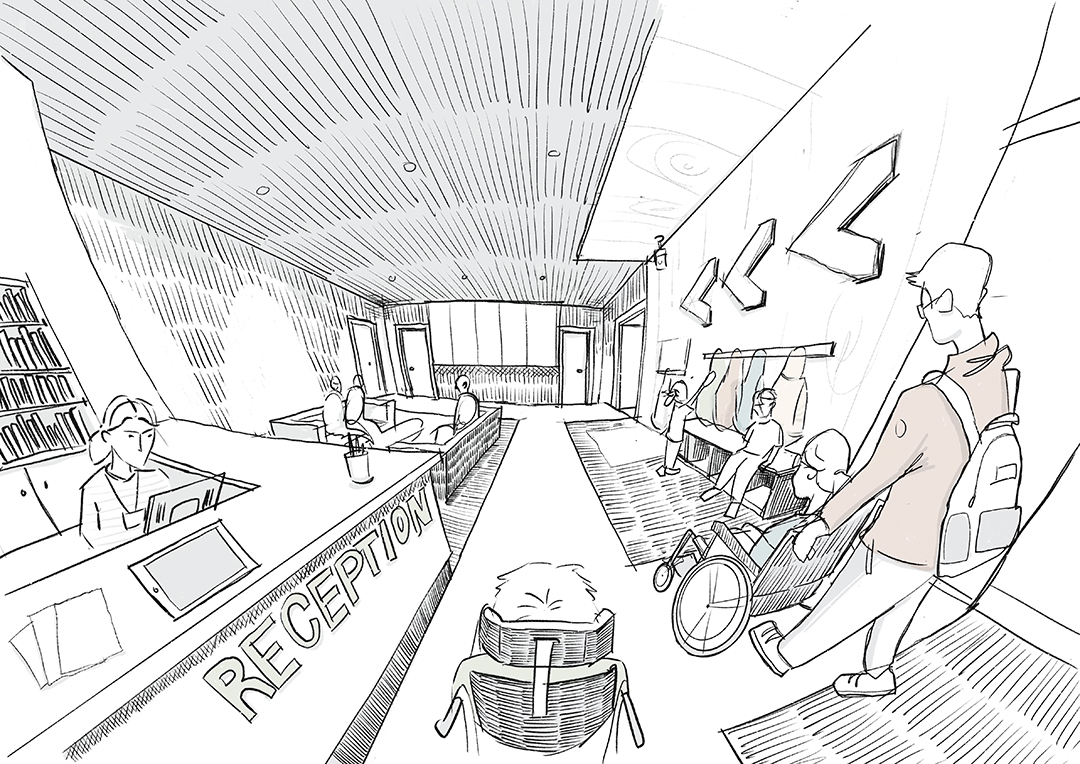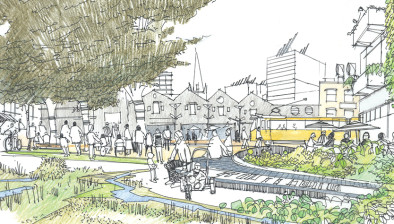New resource supports designing inclusive and accessible learning environments

Architecture and Design Scotland (A&DS) has launched a suite of digital publications to support inclusive and accessible design for Scotland’s learning environments.
‘Designing for inclusive and accessible learning environments’ draws on a recent feasibility study at the Craighalbert Centre – the Scottish Centre for Children with Motor Impairments – to demonstrate how design can create safe, accessible, and nurturing space for every pupil.
The Craighalbert Centre aims to create an inclusive, integrated nursery environment where children can learn and play in shared spaces, regardless of whether they have profound and multiple learning disabilities (PMLD) or more typical support needs.
To support this, Architecture and Design Scotland and Fraser/Livingstone Architects produced a feasibility study for the spatial requirements at the centre for children with additional support needs (ASN).
To further enhance the project’s impact, a workshop was held with Education Scotland and their National Complex Needs Network (NCNN). Members of the NCNN, who support learners with the most complex needs, shared their invaluable experiences regarding necessary adaptations for their pupils.
Their input was instrumental in identifying common themes and overcoming barriers, ensuring the developed considerations are robust and effective, A&DS said.
Following the study, A&DS used the findings to develop a suite of digital publications that showcase how design can help create safe and supported spaces that meet the needs of all pupils – from a child with no additional needs to those with profound and multiple learning disabilities (PMLD).
Now available on Architecture and Design Scotland’s website, the suite of online digital publications includes:
- A series of animated videos and audio tracks that bring to life the design ideas for learning spaces across six different scenarios
- A publication “User experience informs better design” which sets out “day in the life” scenarios based on user experience
- A pattern language guide exploring spatial ideas for inclusive and accessible learning environments
- Seven principles for inclusive and accessible design
- A summary of barriers and design opportunities based on discussions and workshops with Education Scotland and their National Complex Needs Network
All materials are directly informed by workshops and interviews with ASN users and providers, including valuable site visits to ASN schools and centres.
Tailored for architects and designers, local authorities and learning estate professionals, the resources draw on real-life insights from learners, carers and ASN professionals.
A&DS invites professionals across the learning estate to use and share the resources as part of a wider commitment to creating inclusive and accessible spaces.
Lesley Riddell-Robertson, principal designer at Architecture and Design Scotland, said: “We developed this resource to share the valuable insights gained from our Early Years project with the Craighalbert Centre. It outlines a design process for creating more inclusive and accessible spaces, integrating the lived experiences of all pupils and educational professionals.
“By highlighting diverse perspectives and uncovering often-overlooked barriers, we aim for these digital publications to inform better spatial decisions, fostering inclusive and accessible learning environments.
“While this resource focuses specifically on ASN learning environments, we recognise that comprehensive inclusivity involves many other factors and are eager to participate in future projects exploring these broader aspects.”
Allison Phillips, head of quality for partnerships and innovation at the Craighalbert Centre, said: “It was a privilege to be part of a project that truly put children with profound and multiple learning disabilities at the heart of design thinking.
“Although our space is already inclusive and accessible, this work highlighted thoughtful ways we could adapt and enhance it to better meet the needs of the children we support. It’s vital that designers plan for the most complex needs from the start, because truly inclusive design leaves no one behind.
“One powerful lesson from this work is clear: inclusivity must begin at the design stage. Retrofitting spaces for children with PMLD is difficult and often insufficient, these children must be part of the planning conversation from the outset. The project has left us inspired, hopeful, and full of ideas for how our space can evolve, and we look forward to making those ideas a reality when funding allows.
“We encourage everyone working in education, health, design, and planning to read the findings and take them forward. Children with PMLD deserve spaces that are not only accessible but that truly welcome, include, and celebrate them.”
Malcolm Fraser, director and architect from Fraser/Livingstone Architects, added: “Buildings for schools – and in particular those like Craighalbert, with additional care, mobility and accessibility requirements – can become machines, built around technical compliance.
“We sought to ensure that the virtues of good architecture came first: for everyone benefits from the sensory pleasures of sunlight and access to a garden, fresh air and good acoustics, and warm materials and clear circulation. And that, occasionally, the technical can sometimes aid the architectural, like a big storage wall to tidy-up the plethora of equipment needed.”
Fran Foreman, senior officer from Education Scotland, said: “Having the opportunity to learn from and share the experiences of educators with the project has been a really positive experience.
“Collaboration with Architecture and Design Scotland has supported colleagues across education, architecture and design to come together to focus on improving inclusive and accessible environments for all our children and young people in early learning and childcare settings and schools, including those who require additional support for a range of factors.”

















